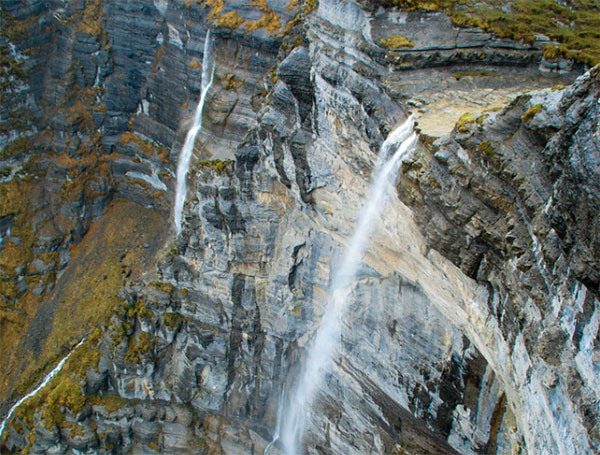With a 300 metre drop, the Nervión waterfall is a natural sight which is worth visiting, above all in winter and spring.
It is a rural area with special natural values which must be preserved through sustainable development models. This way participation (involving the population) seeks to improve the quality of life of the area's inhabitants but preserving traditional uses and ensuring natural resources for future generations.
It is a protective figure for areas with geological formations, paleological sites etc, which are unique through their scientific, cultural or scenic values.
Berberana (formerly Berbesana) and Villalba de Losa are the area's
most significant centres, and part of their areas includes the Natural
Protected Area. They are traditionally, livestock raising towns, as
Madoz recorded in his 1845 dictionary: sheep, goats, cattle, horse and
sows; its industry, the pack animal business,... and trade in livestock
exports and the import of grain, wine and items of clothing.
They still retain a good display of their popular architecture, particularly
the Earl of Berberana's tower in the town of the same name.
Other centres of interest are Murita, Mijala and Zaballa .

The dissolution of this block of limestone from the Cretaceous Era throughout millions of centuries has shaped the landscape we see today. The river Nervión has been "eating away" land at the outcrops and forming a narrow valley, and the rainwater has been filtering through the wood's surface cracks to create chasms, passes and subterranean rivers, some of which open up to the outside through the vertical wall.
Although the beech forest (the forest in Spain's wet region) is the most known in the area, holm-oaks, a species typical of dry areas, are dominant close to Berberana. We also find good antique pine groves
An area as diminished as Monte Santiago offers a great diversity of habitats: rocks, forests, caverns or ponds. It is for this reason that we will be able to find many of the Iberian amphibians amongst the fallen leaves, unknown invertebrates in their chasms or a great variety of thicket animals: badgers, wild boar, blue nuthatchers, tawny owls... It is all a question of patience, silence and attention.
The loberas were pits built with stone walls in which the beaters cornered and killed the wolves. The wolves were hurled into the open from the old pit. There are two more loberas in higher Ramalejo
